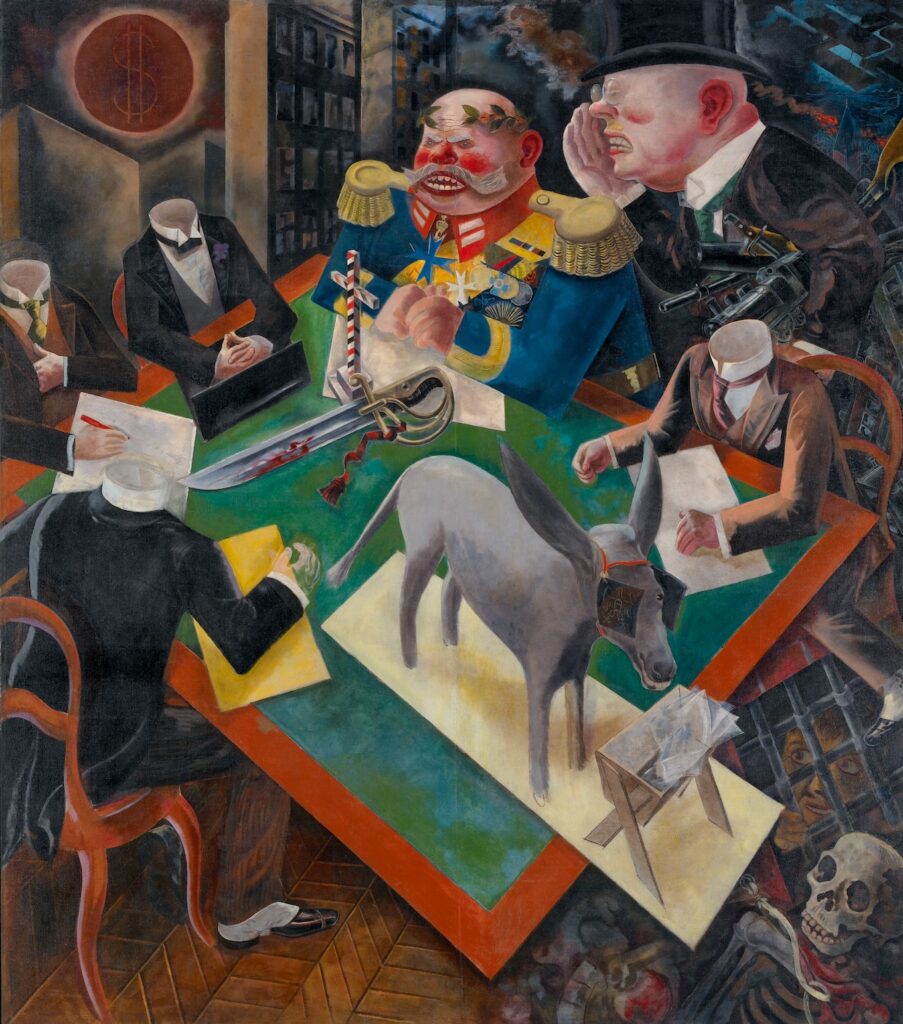Neue Galerie Exhibition Focuses on ‘New Objectivity,’ From an Era Sobered by Economic, Moral, and Political Catastrophe
The exhibition aims to elaborate upon ‘a coherent chapter in art history … [and] the Weimar Republic’s cultural, political, and social complexities.’

An exhibition that recently opened at the Neue Galerie, “Neue Sachlichkeit/New Objectivity,” has a sister show in Germany at Kunsthalle Mannheim, “The New Objectivity; A Centennial.” As the title of the Mannheim exhibition intimates, it’s been a hundred years since a historian, critic, and curator, Gustav F. Hartlaub, mounted an overview on its premises of a cadre of contemporary artists who practiced “a new naturalism.”
The hasty facture, acidic colors, and wild distortions typical of Expressionism? No more of that, danke. Hartlaub’s artists were a cooler, more rational lot, albeit one that could be divided into “a right wing and a left wing.” The former hearkened back to the tenets of Classicism and its emphasis on linearity, uniformity, and a detachment of affect. The latter had no time for the comforts of nostalgia: The world was in too dire a state for such indulgences. Satire of an unforgiving sort was the stock-in-trade.
Categorizations are invariably porous and circumstance has a habit of making close company of strangers. Although distinctions can be made between the bile coursing through Georg Grosz’s “Eclipse of the Sun” (1926) and the rigor underlining Carl Grossberg’s “Jacquard Weaving Mill” (1934), both are indicative of an era sobered by economic, moral, and political catastrophe. The ghosts that haunt these paintings are different in kind but related in character.
The aftermath of World War I made for a German creative class that forwent romanticism for engagement, for a need to “let people know how dreadful war is and so to stimulate people’s powers of resistance.” The quote is from a painter and printmaker, Otto Dix, who is represented at the Neue Galerie by two inescapable canvases, “Dr. Mayer-Hermann” (1926) and “Reclining Woman On a Leopard Skin” (1927). Each portrait is powered by a wheedling strain of misanthropy that reduces its subjects, respectively, to the buffoonish and the bestial.

“New Objectivity” has been organized by a professor at Martin Luther University at Halle-Wittenberg, Germany, Olaf Peters. The doctor has pledged his troth to the Neue Galerie before, organizing the provocative, if inherently bumpy, “Degenerate Art: The Attack on Modern Art in Nazi Germany, 1937” and the splendid “Max Beckmann: The Formative Years, 1915-25.” With the current exhibition, Dr. Peters hopes to elaborate upon “a coherent chapter in art history … [and] the Weimar Republic’s cultural, political, and social complexities.”
The exhibition has been organized under five different themes, some of which are muzzy in their parameters: “Playground and Object,” “Character and Representation,” “Figure and Space,” “Fashion and Housing,” and “Thought and Practice.” The latter keys into the notion of gestaltung — the shaping of a given work according to the principles and characteristics of its medium — and does so in order to refute “contemporary tendencies to demystify the artist and the act of creation.”
A suite of lithographs and a watercolor drawing by Oskar Schlemmer show how an artist thinks out loud. So why not underscore the point by including them next to signature pieces like “Five Nudes” (1929) and “Bauhaus Stairway” (1932)? Instead, these two pictures are displayed in “Playground and Object,” an adjacent gallery that professes to meld the playfulness of children, the problematic nature of consumerism, and well-crafted industrial products. As I said: muzzy.
All the same, “New Objectivity” is a bracing exhibition, providing less an encyclopedic overview of the era than a concrete manifestation of its dour, sour mood. Dr. Peters has included a lively array of mediums — not just paintings, but drawings, prints, photos, films, posters, a handful of sculptures, and a vitrine containing designer objects. The latter bear a notable commonality with metal sculptures by Schlemmer and Rudolf Belling, objects whose sleek geometries and streamlined contours offer denatured versions of the Jugendstil aesthetic.
Two-dimensional images predominate, bringing to the fore the scabrous, scathing, and clinical nature of the Neue Sachlichkeit mindset. The Grosz painting mentioned earlier is typical in its use of cartoonish grotesques and apocalyptic urbanism, but is atypical in scale: It’s amongst the largest of his canvases. Georg Scholz’s works-on-paper feature caricatures that are outrageous in their distortions, and clammy and caustic: Check out, especially, “Profiteering Farmer’s Family” (1920) and “Swastika Crusader (In the Café)” (1921).
And so it goes, with relative respites being offered by Carl Grossberg’s precisionist cityscapes, the otherworldly still-lifes of Eberhard Viegener, and the self-possessed young woman seen in a gender-bending canvas by Rudolf Schlichter, “Woman With Tie” (1923).
The boon of encompassing exhibitions like the Neue Galerie show is how museum mainstays like Dix, Grosz, and the photographer August Sander are offset and sometimes enlivened by figures who, for one reason or another, have been shuttled to the margins of history. Would the reputations of Scholz, Grossberg, Viegener, and Schlichter benefit from a more thorough accounting of their oeuvres? Maybe not, but an intrepid curator — Dr. Peters, perhaps — could do worse than put that question into motion.
In the meantime, “New Objectivity” makes for a healthy dose of an unhealthy time.

